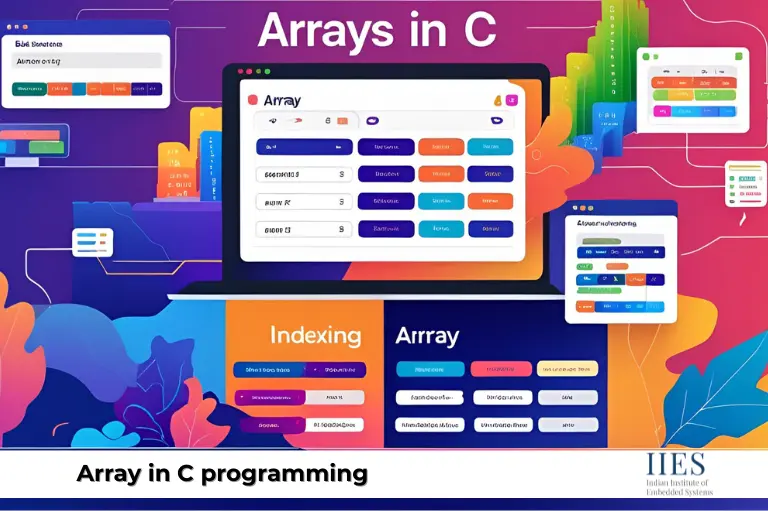
When learning C programming, one of the first concepts you’ll come across is arrays in C. Arrays make it possible to store a group of values under a single variable name instead of creating multiple variables for each item. This not only keeps programs organized but also helps in writing efficient, readable code. For beginners, understanding how array initialization in C works and how arrays are stored in memory is a key step before moving on to advanced topics like pointers or dynamic memory allocation.
Arrays in C are essentially a collection of values of the same type, placed in contiguous memory locations. Each value can be quickly accessed using its array index in C, which makes operations like searching, sorting, and iterating much faster. Thanks to their predictable array memory representation, arrays are widely used in almost every C program, from simple logic-building exercises to large-scale embedded systems.
An array in C is a collection of elements of the same data type, stored in consecutive memory locations. Instead of creating multiple variables for similar data, arrays provide a structured way to organize them.
For example, instead of declaring five different integers, you can declare one integer array that holds all five values.
Arrays are useful because they:
This makes them especially useful in embedded systems, operating systems, and large-scale applications.
The basic syntax for declaring an array is:
data_type array_name[size];Example:
int marks[5];This creates an integer array named marks that can store 5 values.
You can initialize arrays in two ways:
Example of initialization at declaration:
int numbers[5] = {2, 4, 8, 12, 16};
Here, an integer array of size 5 is created and initialized with values.
Arrays are stored in contiguous memory locations. This means that each element is placed consecutively in memory, making it easier to calculate the address of any element using its index.
For example:

This property ensures fast access using indexes.
You can access array elements using their index. Indexing in C always starts from 0.
Example:
printf("%d", numbers[2]);
This will print the 3rd element of the array (8 in the example above).
C supports different types of arrays depending on dimensions:
A sequence of elements stored in a single row.
int arr[5] = {10, 20, 30, 40, 50};
Arrays with more than one dimension, like 2D arrays (matrix).
int matrix[2][3] = {{1, 2, 3}, {4, 5, 6}};
Used to store sequences of characters.
char name[10] = "Hello";
Loops are commonly used to process arrays.
Example using a for loop:
for(int i = 0; i < 5; i++) {
printf("%d ", numbers[i]);
}
This prints all elements in the array sequentially.
Imagine storing the marks of 50 students. Without arrays, you would need 50 separate variables. Using arrays:
int marks[50];
Now you can store and process all marks efficiently using loops.
Arrays are one of the most fundamental concepts in C programming. They provide a structured way to store data, allow efficient access through indexes, and make memory management predictable. Mastering arrays is essential before moving on to advanced concepts, such as pointers, structures, and dynamic memory allocation.
By practicing array declaration, initialization, and iteration, learners will build a strong foundation in programming with C.
An array declaration in C means defining the type of data the array will hold, giving it a name, and specifying how many elements it can store. For example, an integer array can be declared to hold five values.
Array initialization means assigning values to the array elements. This can be done when the array is declared or later in the program. For instance, you can create an array and directly assign values to it at the same time.
Array traversal is the process of visiting each element of an array sequentially. This is usually done with loops so that all the values stored in the array can be read, processed, or displayed.
A one-dimensional array is like a simple list of elements arranged in a single row. A multi-dimensional array, on the other hand, can be thought of as a table with rows and columns, making it useful for storing data in matrix form.
Arrays make it easy to manage large amounts of similar data, provide fast access to elements using indexes, and work seamlessly with loops. The disadvantages are that their size is fixed once declared, and they can only store one type of data.
A practical example is storing the marks of students in a class. Instead of creating a separate variable for each student, you can store all the marks together in one array, making it easier to process and manage.
Indian Institute of Embedded Systems – IIES